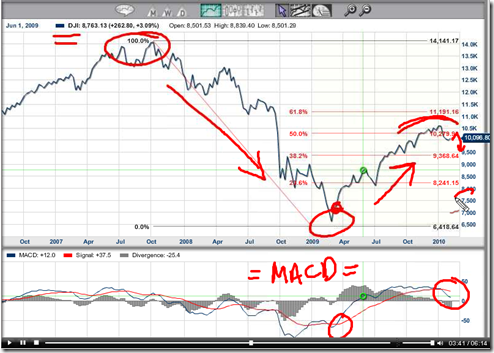Much has been made of the similarities between current times and the Great Depression. The first leg down of each crash creating fear that a complete financial collapse was imminent, only to be averted by massive liquidity fueling hope and optimism, at least for a short time. If history does indeed repeat itself (and it often does in the stock market), then there is reason for Great concern.
We’ve now completed the first big crash (in the latter half of 2008), followed by the first big retracement of around 50%. Now, just like then, there are many that feel we’re out of the woods with some talking heads even calling for a new bull market. A 50% retracement rally in less than a year will do that. Nobody knows how all this plays out, but with the growing debt issues, the coming increase in taxes, growing government control and the and the fear of skyrocketing inflation down the road, it’s not exactly conducive to a rip roaring economy. .. and you can’t ignore the similarities to 1929. At the very least, we’ve got an extremely bumpy road ahead and it’s going to pay to be extremely cautious in the coming years.
Below is a great video done by Adam Hewison of Market Club taking a look at the stock market in 1929 vs 2010 through the Dow. He brings up a good point that many baby boomers have already been hit hard once, recovered much of losses and will likely do anything to protect what’s left of their nest egg which includes exiting the stock market completely. Perhaps that’s a train that can’t stopped no matter how much money the government throws at it.

I like the MACD analysis. Unfortunately, following the buy signal on April 1st 2008 would have screwed you over pretty bad. Then if you fell for the semi-buy signal in September 2008 you would have lost so much money that you would have probably committed suicide before you could take advantage of the buy signal in March 2009. Maybe changing the timescale would have helped eliminate the false signals.